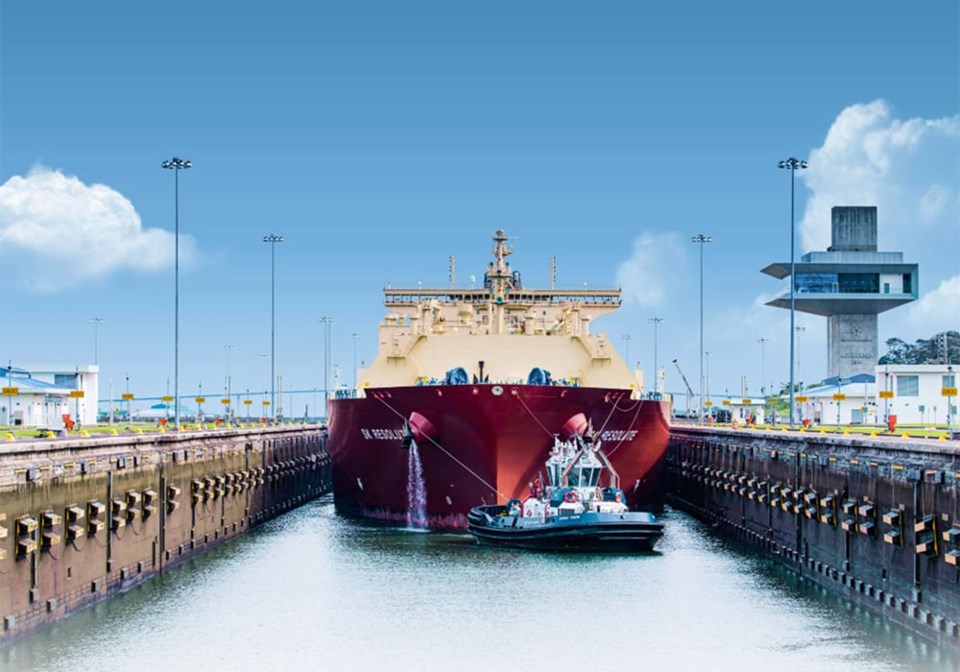WESTERN PRODUCER — Low water levels in the Panama Canal are not disrupting Canadian grain shipments, but they are causing turmoil for exporters in the United States.
Transit capacity in the canal has been reduced to 24 ships per day through the end of November, according to a news release from the Panama Canal Authority (PAC).
That compares to 36 to 38 ships per day under normal conditions.
Capacity is scheduled to continue falling to 18 ships per day by Feb. 1.
The , which seriously delayed the onset of the rainy season that usually runs from May through November.
The weather phenomenon has produced the driest October in the canal’s reservoir system in 73 years.
There was 41 percent less rainfall than usual that month, lowering the Gatun Lake reservoir to unprecedented levels.
The reservoir has been receiving daily inflow from rainfall and river flow amounting to seven cubic hectometers per day, which is well below the average of 15, according to PAC.
The combined daily outflow from canal operations, evaporation, human consumption and industry amounts to 10 hectometers.
That is resulting in a daily deficit of three hectometers, which is the equivalent of 1,200 Olympic-sized pools.
The reservoir’s water level is the lowest ever recorded during a rainy season.
The reservoir supplies water for 55 percent of Panama’s population in addition to maintaining the operations of the interoceanic waterway.
The canal’s restricted capacity is resulting in lengthy delays and rising costs on a major trade route for many North American agricultural products.
Transit slot auction prices have reached record highs. A very large gas carrier (VLGC) recently bid US$2.85 million for a crossing, according to a DTN article.
Wade Sobkowich, executive director of the Western Grain Elevator Association, isn’t overly concerned about what he hears is a three-week delay at the canal.
“It doesn’t have a big impact on Canadian grain exporters,” he said.
Sobkowich said the had an “exponentially greater” impact on Canada’s 2023-24 shipping program.
The Panama Canal is not a heavily used trade route for Canadian exporters, although a few vessels of wheat and durum bound for the Middle East and North Africa are shipped through the canal every year.
“With the delays now, it doesn’t pencil out for them to ship grain through that route,” he said.
Fortunately, Canadian shippers have an alternative. Instead of using the ports in Vancouver and Prince Rupert, they can reroute those shipments through the St. Lawrence Seaway.
Their American counterparts are not as lucky.
“It has a huge impact on U.S. exporters loading in the Gulf of Mexico and destined west,” said Sobkowich.
Mike Steenhoek, executive director of the U.S. Soy Transportation Coalition, told DTN that 16.3 million tonnes of U.S. soybeans were shipped through the canal in 2022.
“Delays at the Panama Canal will continue to be costly and will cause exporters to explore alternatives,” he said in an email to DTN.
“The recent low water conditions on the Mississippi River and the current conditions at the Panama Canal serve as a reminder that lack of precipitation can impede the ability to grow a crop but also impede the ability to transport that crop.”
Contact [email protected]
Bookmark SASKTODAY.ca, Saskatchewan's home page, at this link.




